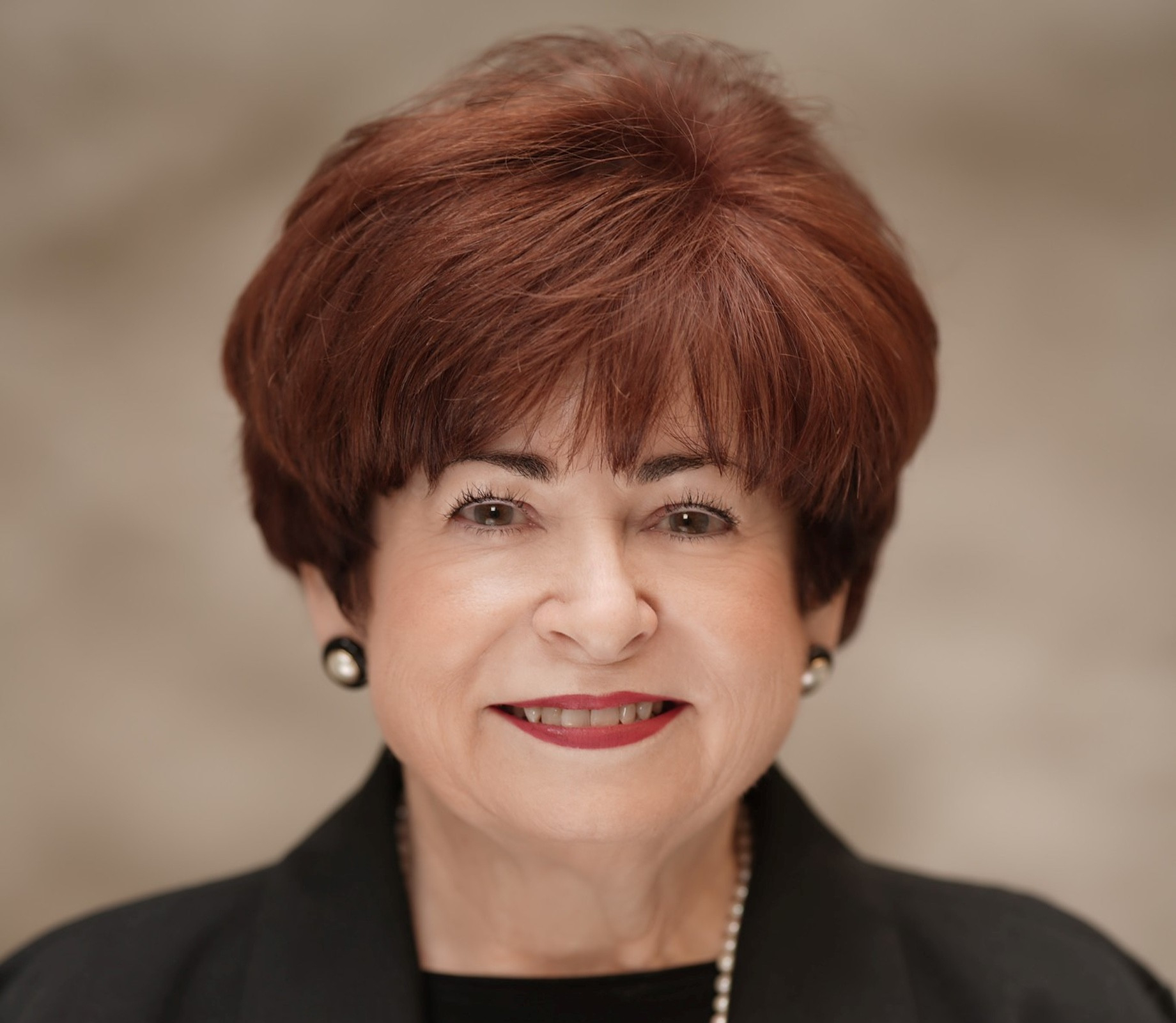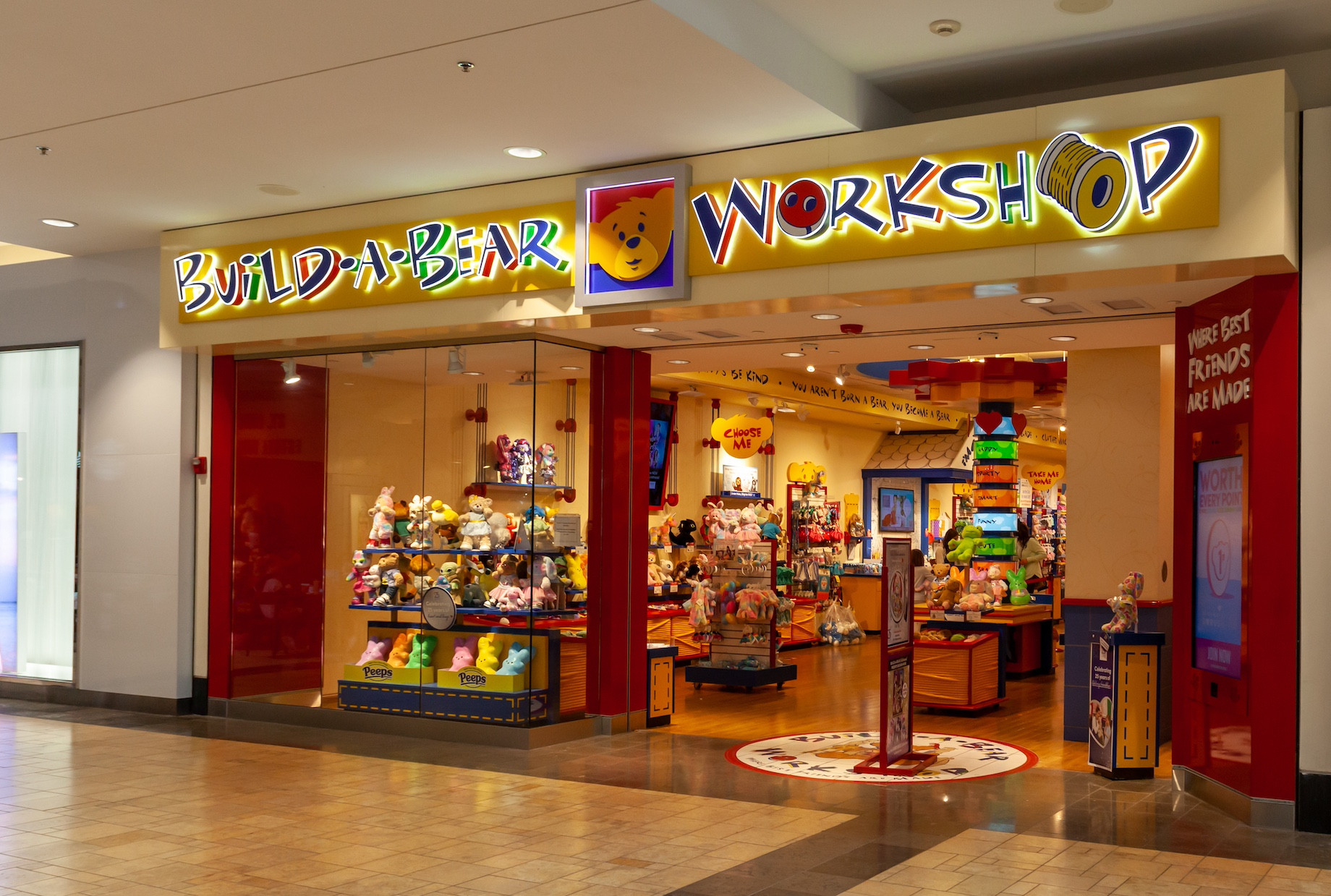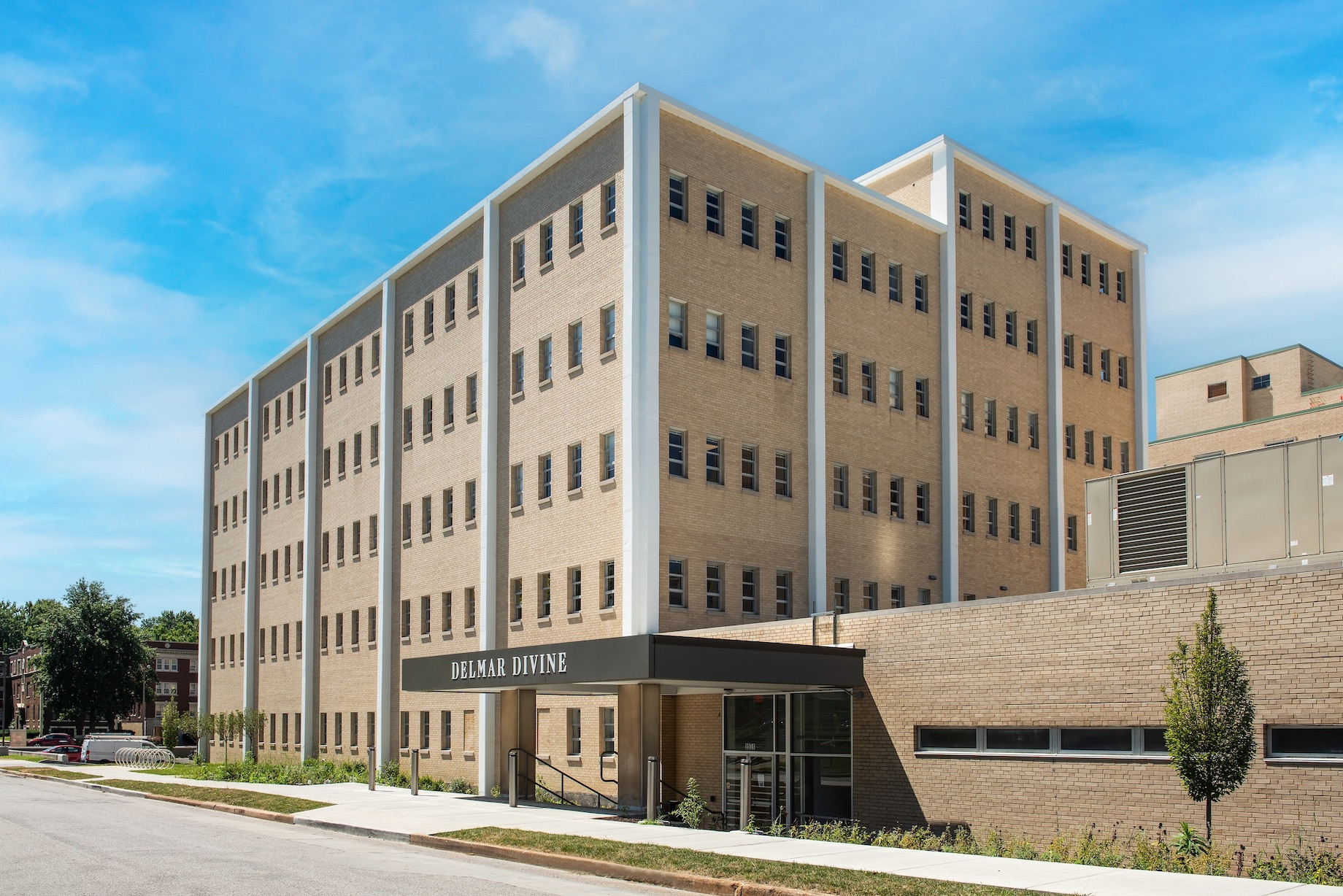Maxine Clark, founder of Build-A-Bear Workshop, built a successful career by seizing opportunities and following wherever they lead. “I always say curiosity is my superpower,” she said.
After graduating from the University of Georgia with a journalism degree, Clark headed to Washington, D.C., in 1971 to become a civil rights attorney. To pay for law school, she got a job at The May Department Stores Co. Management asked her to fill in when her boss became ill. “That meant I had to take a leave of absence from law school, so I did and I’m still on that leave today,” she laughed.
For the next 20 years, Clark made her way up the chain of The May Department Stores Co., becoming president of Payless ShoeSource, its largest and most profitable division. In 1996, when May spun off Payless as a public company, Clark, then 48, decided to start her own business. “I had no idea what it would be, but I knew I was entrepreneurial,” she said. In 1997 she founded Build-a-Bear Workshop, which since has sold more than 200 million stuffed animals around the world.
Pivoting once more, Clark spearheaded a hub for nonprofits called Delmar DivINe. Located in a former St. Louis hospital, it also offers retail services and 150 apartments, including low-income units. A fan of collaboration — “No one person can do it. There’s no magic wand that makes change,” she said — she hopes the groups and individuals working together at Delmar DivINe will share ideas and solve some of St. Louis’ most pressing issues.
She talked to ICSC Small Business Center contributing editor Rebecca Meiser about the inspiration for Build-A-Bear, why you’re never too old to start a business and how Oprah Winfrey changed everything.

How did the idea for Build-A-Bear Workshop come about?
I was out shopping with Katie, the daughter of a friend, who was 10 at the time, and her little brother Jack. We were looking for Beanie Babies. We couldn’t find the one that Katie wanted, so she declared that we should make them ourselves and the rest is history. Nine months later, we opened the first Build-A-Bear store at the St. Louis Galleria.

The St. Louis Galleria Build-A-Bear Workshop in March 2022
How did you know the idea was worth pursuing?
I was just thinking like a kid. I knew kids loved field trips. I was thinking they could go on a field trip to the mall to make their own stuffed animals. And I thought, too: Why wouldn’t kids want to make their own bears? There were so many paint-your-own [pottery] stores back then, but they were more for adults than for children and it wasn’t instant gratification. You had to wait till they burned in the kiln, and you had to come back and pick it up later. I knew [the Build-A-Bear concept] would be successful, but I didn’t know how successful.
Did you have any projections on how the business might do? Did you write a business plan?
I wrote a 10-year plan down to the financial numbers, which I exceeded, but I had to convince myself it was worth doing, not so much for the bankers yet but just for myself to make sure that this was something I wanted to do. Luckily, the plan was a really great guideline for the future that we’ve created at Build-A-Bear [over] 27 years.
How did you test the concept?
My first board of directors were children because they were the customers. They were all about 6 to 12 years old, and they were fantastic. They had a lot of opinions and they helped me a lot. Their enthusiasm really encouraged me because you can market to parents all you want, but if their children don’t want to go there, it won’t matter.
What were some ideas that came out of the board? Were any of them particularly impactful?
One was about the color of some of the animals. We had a kitty cat that was an orange color. I showed it to them, and Molly Saunders, who’s now married and has her own children, raised her hand. She said, “Oh, that looks like macaroni and cheese,” and I thought, “Oh, that’s good! Kids love macaroni and cheese.” I said, “Is that good, Molly?” and she said, “No! You don’t eat your cat.” She wanted to change the color, so we changed the color. She approved the final color. It’s still our No. 1 seller at Build-A-Bear. There were other ideas. One child had an idea to make the nose a heart shape for Valentine’s Day bears. They also suggested what price to sell them, how cuddly they should be, what clothes they should wear.
What would you tell other people who are looking for new business ideas to do?
You have to see what’s missing or what is an opportunity. I didn’t invent bears. Ray Kroc didn’t invent hamburgers. Howard Schultz didn’t invent coffee. We just all invented how to do it a better way, a way that apparently millions of people liked, and that’s the name of the game.
Was there a turning point for Build-A-Bear when you knew it would be successful?
In 2004, we got a call to be on the Oprah show. I was in Japan because we were opening a store there. My PR company let me know that they wanted me to be there for the Monday show. They asked if I could get back. I told them: “No, I can’t get back. Sorry.” The next call was from a producer, who asked me if I could come on Tuesday. I said: “I’m sorry. I can’t be there on Tuesday because I have to be in Korea for our store opening there.” The next call was from Oprah. And she said: “Hi, this is Oprah Winfrey. When can you be here? We’d really like to have you on the show.” I told her I could be there by Friday, and she said: “OK, that gives me enough time to replicate a Build-A-Bear store in our studio. Who can I talk to about that?” I gave her the name of a person. We had 11 minutes on The Oprah Winfrey Show in February of 2004. That catapulted us to national fame. That’s because I said no. Had I said yes and gotten there on Monday, it just would have been a [shorter] interview.
What was the lesson in that?
I’m a yes, person. I want to say yes. I want to help people. I want to grow the business. But sometimes you just can’t say yes, and you need to honor that.
What was the biggest challenge Build-A-Bear had to overcome?
When we hit the recession in 2008 and 2009, that was hard, because we were still a young company. We were just a little over 10 years old. We had a lot of growth ahead of us, and we had to kind of stall the growth. We had to cut back some people, which was really hard for me because a lot of the people were people who had started with us from the very beginning. I kept thinking because it was the fall of 2008 that Christmas will come and it will all be better, but if I had probably addressed [the recession] a little bit sooner, then people would have had a less hard time finding a job. We just didn’t react to it as fast as we should have. That never happened again. You learn from your mistakes, and you just have to be able to pick yourself up, dust yourself off and keep going. Otherwise, the business won’t be there, and that’s the most important endgame: sustaining the business over time.
You started Build-A-Bear when you were 48 years old. What would you say to entrepreneurs who think they’re too old to start a business?
You’re the perfect age when you’re older because you have the life experience to understand that things are going to go up and go down. You know how to treat people. You’ve had more life experiences. It’s just a much better place to start from.
You are known for investing in and uplifting minority entrepreneurs. Why is that so important to you?
I was a minority entrepreneur. Being a woman entrepreneur in 1996, just starting out, I couldn’t even get a bank account without my husband co-signing on the business account. We couldn’t get a letter of credit from a local bank even in St. Louis. They said “We’ll see” and “Let’s stay in touch.” My first line of credit came from Star Banc in Cincinnati, Ohio, which became Firststar, and then that bank [acquired and became] U.S. Bancorp. Richard Davis, who approved the letter of credit for us, became the CEO of U.S. Bancorp, and he invited me several times to Minneapolis to tell the story of Build-A-Bear and how important it was to invest in a small business.
After retiring as CEO of Build-A-Bear in 2013, you talked a lot about wanting to give back. Delmar DivINe is your biggest social-impact effort to date. Tell us about the concept.
I think of it as a neighborhood within a neighborhood because it’s half a million square feet, so it’s about half of a mall. We have offices for nonprofits. We have apartments for young people, teachers, nurses and social workers. About 15% are also low-income housing, so people don’t know who’s who and who lives where. We have young and old and black and white and students, grad students, med students living there. And then, we have brought retail to the front, so we have a bank, pharmacy, urgent care, an Edward Jones investment officer and a deli. Every day, we have a thousand people coming and going: 670 people work here, 235 live here, plus all the people that visit the retail. This is a through line to my career. At Build-A-Bear, for instance, I didn’t have to have all the ideas. I created a canvas that allowed people to come in and create the ideas — and the same thing here. Our [nonprofit office] tenants are about a third education, a third health and mental health and a third community development. They can go knock on each other’s door to work together. The collaboration has been nothing short of amazing in a short time. I’m as proud of this as I am Build-A-Bear.

Delmar DivINe
What inspired you?
My mother was a social worker. She worked for Eleanor Roosevelt during World War II. She was one of her private traveling secretaries. My mother saw all, over the country, inequities: children that were in asylums that shouldn’t have been in asylums for life because they couldn’t be cured, like children with Down syndrome. When Franklin [D. Roosevelt] died, Eleanor gave everyone a small bit of money to go back to their home and start something that would solve one of those problems, so my mother and three of her friends founded a school in Miami for children with Down syndrome. My mother always wanted me to be a person who would follow in her footsteps, but I wanted to be a capitalist. Still, I always understood about philanthropy, even though we didn’t have a lot of money to give away when we were growing up. And honestly, because of all the children and families that contributed to Build-A-Bear’s success, what else was I to with it do? I don’t play golf. I’m not going to go on a vacation. I wanted to give back to our community.
Why that specific vision?
St. Louis has been my home since 1976, and I’ve just wondered: How did they let all these buildings corrode, and how do they have this segregation like this? The Delmar DivINe, you could say, started with a turn. While I was driving around [the area of] our KIPP charter school [a college-prep program of which Clark and her husband, Bob Fox, are founding donors], one of the neighbors said to me: “Why don’t you drive around? You always go left. Why don’t you turn right and see if there’s any place you might like?” I came around the corner and saw [St. Luke’s Hospital]. They were nailing in a for-sale sign. I looked at it and said: “This could be a really great place that we can pull nonprofits together. We can have affordable housing.” I love the idea of bringing people together to solve problems like the ones in St. Louis. No one person can do it. There’s no magic wand that makes change. It takes a lot of time. But my role has always been one of connector, so I went to work trying to get people interested to help me because this is not my thing. I know how to open a store in a mall but not to take a 100-plus-year-old building and turn it into something useful again. But I am very relentless, and I’m determined. I found the partners to do this. It took nine years; Build-A-Bear took nine months.
Can you tell us about the name Delmar DivINe?
Delmar Boulevard is a street in St. Louis that divides rich and poor, black and white. It was called the Delmar Divide. The BBC had made it a big deal of it after [the killing of] Michael Brown, and they told a terrible story about St. Louis. I was just looking at the word one day and I said: “We can’t have that divide. We should change it to Divine.” The “IN” stands for innovation, inclusion, inspiration and investment, and we play off of that. Honestly, I thought we would just use that as working title and the neighborhood would give me better ideas, but they all loved it. The Black sororities and fraternities are called the divine nine, and they thought that was the perfect name for a building that was going to change lives and bring people together to work together.
By Rebecca Meiser
Contributor, Commerce + Communities Today and Small Business Center